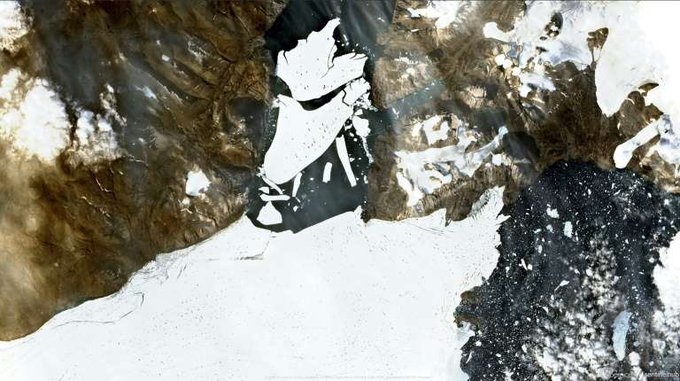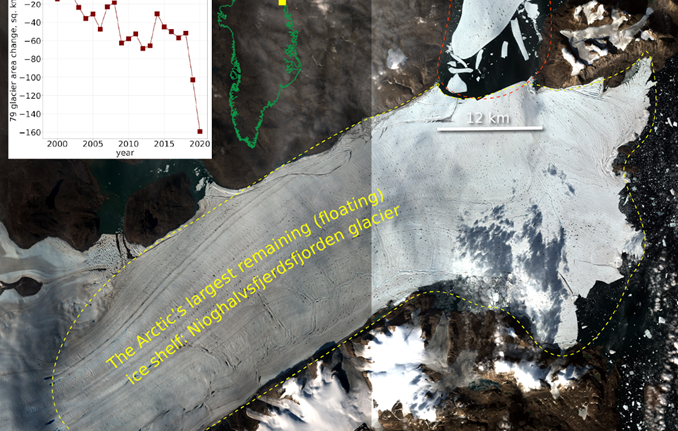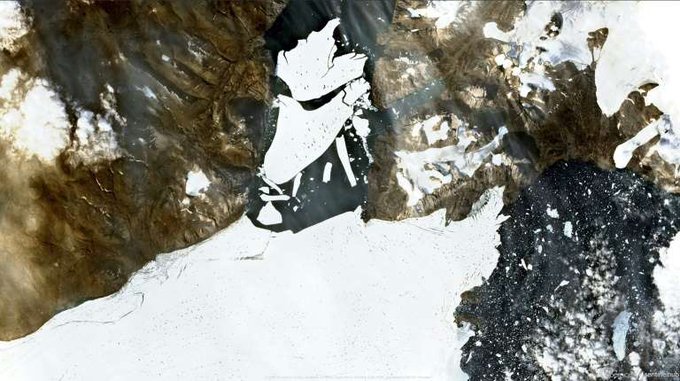A massive ice-sheet nearly double the size of Manhattan broke off of the the Arctic’s last remaining glacier on Monday, September 14. It is named Nioghalvfjerdsfjorden Glacier. Scientists believe this is the result of rapid climate change.

Massive ice-sheet detaches from Greenland’s last remaining glacier
The section of ice sheet that broke off covers around 110 square kilometers and came off of the Spalte Glacier in what scientists describe as ‘progressive disintegration’ of the ice sheet.
The Arctic’s largest ice shelf has just detached a 113 km2 area. The last few years have been incredibly warm in northeast Greenland and this appears to be a progressive disintegration. Read more here: https://t.co/w9bvIoxb0c https://t.co/mJRm5GGMWO pic.twitter.com/TZ1wvA1vxU
— Flemming Larsen (@FlemmingGEUS) September 14, 2020
‘We’re observing increasing speed on this largest remaining ice shelf,’ Jason Box, professor of glaciology at the Geological Survey of Denmark and Greenland (GEUS), told AFP.
The process of pieces of breaking free from glaciers is called calving and is a relatively common occurrence, but not at this large of a scale.
Since 1999, the Nioghalvfjerdsfjorden glacier has already lost 160 sq km of ice, with the rate of loss increasing over the last two years, according to reports from GEUS.
The persistent melting of Greenland’s glaciers as a resut of climate change, contributes to rising sea levels. The ocean has risen by 1.1 centimetre between 1992 and 2018 according to a study published to the science journal Nature.
While that number may seem small, a more recent study by the University of Lincoln in England predicts sea levels could raise by as much as 10 to 12 centimetres by 2100 if Greenland’s glaciers continue to melt.
‘Temperatures in the Arctic are rising faster than the global average. More heat is available from air and ocean to melt away the bottom and surface of ice shelves, and the thinning ice shelves are more susceptible to breaking up.
‘We saw this with Zachariae Glacier, this summer with Milne Ice Shelf in Canada, and now Nioghalvfjerdsfjorden Glacier is losing parts of its ice shelf as well.’ said Dr. Niels J. Korsgaard, researcher at The Geological Survey of Denmark and Greenland (GEUS)
Image credit: Twitter/@BirkzLc

















